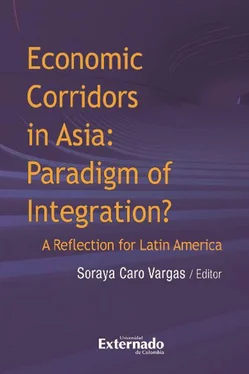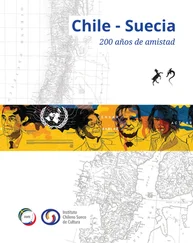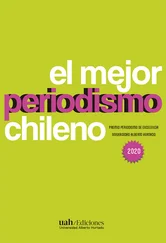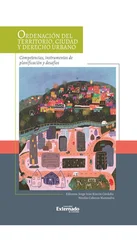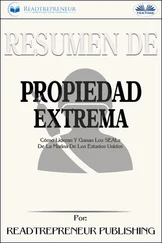At the sub regional level, the issue emerges about economic dividends of the corridors and whether these would help capital and labor migration through seamless connectivity. This, because within Asia and particularly in Southern Asia the problem has been the issue of Mode-II and Mode IV migration, dealing with unskilled and skilled labor. Additionally, the one challenge which might become an issue in the sub regional construct is how the other economies would view the competition to their own industry. Also, whether the regional value chain would add or subtract the value of the respective products. At the sub-regional level, the infrastructure development can only pay dividends when there are free trade agreements, easy border custom procedures and simple documentation. India has made blueprints for the economic corridors, but the issue is fund generation and completion within accepted timelines. However, this has been the major challenge for most of the developing world. With growing economies and better procedures, the deadlines for better economic futures might be met.
While India has always faced problems with regard to project implementation and completion, there are challenges related to employment, corruption, labor laws and labor unrest which might lead to delays in projects. These are unforeseen circumstances which exist in any developing country. However, most of the Ministries in India work as per the blueprint and this has provided blueprints but then as those projects which have never started might face political axes as the opposition parties may wish to redraw the projects depending on their political stances.
The theoretical arguments in the context of economic corridors have stated that urban centers have created economic spaces for development while on the other hand, there are arguments that production and economic centers have helped in developing nodes of economic activity in most of the developing economies. The case in point has been Indonesia, Greater Mekong Sub region (GMS) and other such projects which have been undertaken with the help of international institutions as well as entrepreneurship. The theoretical arguments in such a context support that an economic ecosystem is created when the viability and utility of these economic corridors have been assessed and carefully planned so that financial hurdles can be overcome through international funding and public-private partnership. In developing countries such as India, demand is created because of high populations and need for employment sustains the economic corridors. Furthermore, domestic consumption and production also support these economic corridors.
BANOMYONG, R. (2010). Benchmarking Economic Corridors logistics performance: a GMS border crossing observation. World Customs Journal. Retrieved from: http://www.worldcustomsjournal.org/media/wcj/-2010/1/Banomyong.pdf
Department of Industrial Policy and Planning FDI. (n.d). Fact Sheet on Foreign Direct Investment (FDI) From April, 2000 to March, 2018, FDI Statistics. Retrieved from: https://dipp.gov.in/publications/fdi-statistics/archives
HILHORST, J. (1972). Development Axes and The Diffusion of Innovation. Development and Change, 4 (1). 1-16. doi: 10.1111/j.1467-7660.1973.tb00626.x
International Monetary Fund (IMF). (August 8, 2018). India’s Strong Economy Continues to Lead Global Growth. Retrieved from: https://www.imf.org/en/News/Articles/2018/08/07/NA080818-India-Strong-Economy-Continues-to-Lead-Global-Growth
Make in India. (2018). Connecting the country dedicated freight corridors. Retrieved from: http://www.makeinindia.com/article/-/v/connecting-the-country-dedicated-freight-corridors
MARTIN, R. (1999). Editorial: The ‘New Economic Geography’: Challenge or Irrelevance? Transactions of the Institute of British Geographers, 24(4) pp. 387-391
MOHAMMAD, N. (2018). Modi Is Meeting Abe under the Shadow of Delayed Japanese-Funded Infra Projects. Retrieved from: https://thewire.in/political-economy/modi-is-meeting-abe-under-the-shadow-of-delayed-japanese-funded-infra-projects
Niti Aayog (May 2015) Infrastructure: Powering Growth through Connectivity. Retrieved from http://www.niti.gov.in/writereaddata/files/document_publication/infrastructure-slides.pdf
Niti Aayog. (September 2018). Transforming India’s Mobility a Perspective. The Wire . Retrieved from: http://niti.gov.in/writereaddata/files/document_publication/BCG.pdf
PAIN, K. (2002). Global Cities, Gateways and Corridors: Hierarchies, Roles and Functions, Retrieved from: http://www.gateway-corridor.com/roundconfpapers/documents/Pain_Kathy_Winnipeg.pdf
PETRELLA, S. (2018, March 27). What Is an Economic Corridor? Retrieved from: https://reconnectingasia.csis.org/analysis/entries/what-economic-corridor/
Port-led Industrialization. (2018). Retrieved from http://sagarmala.gov.in/project/port-led-industrialization
PRABHU, J. (2014). Is the National River Linking Project worth the Rs 5.6 lakh crores Narendra Modi government plans to spend on it? DNA. Retrieved from https://www.dnaindia.com/analysis/standpoint-is-the-national-river-linking-project-worth-the-rs-56-lakh-crores-narendra-modi-government-plans-to-spend-on-it-1994066
Press Information Bureau. (February 10, 2018). 14 Coastal Economic Zones being developed under Sagarmala. Retrieved from http://pib.nic.in/newsite/PrintRelease.aspx?relid=176381
Press Information Bureau. (January 3, 2018). Cabinet approves Jal Marg Vikas Project for enhanced navigation on the Haldia-Varanasi stretch of National Waterway-1, (2018, January 3). Retrieved from http://pib.nic.in/newsite/PrintRelease.aspx?relid=175210
Price Waterhouse Coopers (PWC) 2015. Industrial Corridor Development in India – Programme Architecture and Next Steps. Retrieved from https://www.pwc.com/jp/ja/advisory/seminar/2015/assets/pdf/6-industrial-corridor-development-in-india.pdf
Rajya Sabha. (2018). Question No.1127 Status of Trilateral Highway Project. (2018 December 20). Raja Sabha, Unstarred Question No.1127, Answered On 20.12.2018. Retrieved from: https://www.mea.gov.in/rajya-sabha.htm?dtl/30799/QUESTION+NO1127+STATUS+OF+TRILATERAL+HIGHWAY+PROJECT/
RAZDAN, D. (2016). Dedicated Freight Corridors: Paradigm Shift Coming in Indian Railways’ Freight Operations. Retrieved from http://pib.nic.in/newsite/mbErel.aspx?relid=134359
RICHARDSON, H. (1978). Growth Center, Rural Development and National Urban.
RICHARDSON, H. (1981). National Urban Development Strategies in Developing Countries, Urban Studies, 18, 267-283.
Sagarmala Project. (n.d). Background. Retrieved from: http://sagarmala.gov.in/about-sagarmala/background
SINGH, L. (n.d). The Kunming Initiative: Prospects for Sub-regional Cooperation. Retrieved from: http://citeseerx.ist.psu.edu/viewdoc/download?doi=10.1.1.518.776&rep=rep1&type=pdf
The Economic Times. (December 30 th, 2018). Railways completes 306Km of Western Dedicated Freight Corridor. Retrieved from https://economictimes.indiatimes.com/industry/transportation/railways/railways-completes-306-km-of-western-dedicated-freight-corridor/articleshow/67313648.cms
The Economic Times. (November 12 th, 2018). Varanasi terminal: Modi’s ambitious project to speed up economy, Retrieved from http://economictimes.indiatimes.com/articleshow/66587045.cms?utm_source=contentofinterest&utm_medium=text&utm_campaign=cppst
The Hindu Business Line. (November 29 th, 2018). Trilateral highway with Myanmar, Thailand to be ready in about 2 years. Retrieved from https://www.thehindubusinessline.com/economy/logistics/trilateral-highway-with-myanmar-thailand-to-be-ready-in-about-2-years/article25624095.ece
USAID (2018). Indo-Pacific Economic Corridor (IPEC) Phase I: Coordinated Regional Trade Analysis, Assessment Report Asia and the Middle East Economic Growth Best Practices (AMEG) Project Chemonics International, Inc. Task Order No. AID-OAA—12-00008, April 2015. Retrieved from http://pdf.usaid.gov/pdf_docs/PA00KZQ1.pdf
Читать дальше
